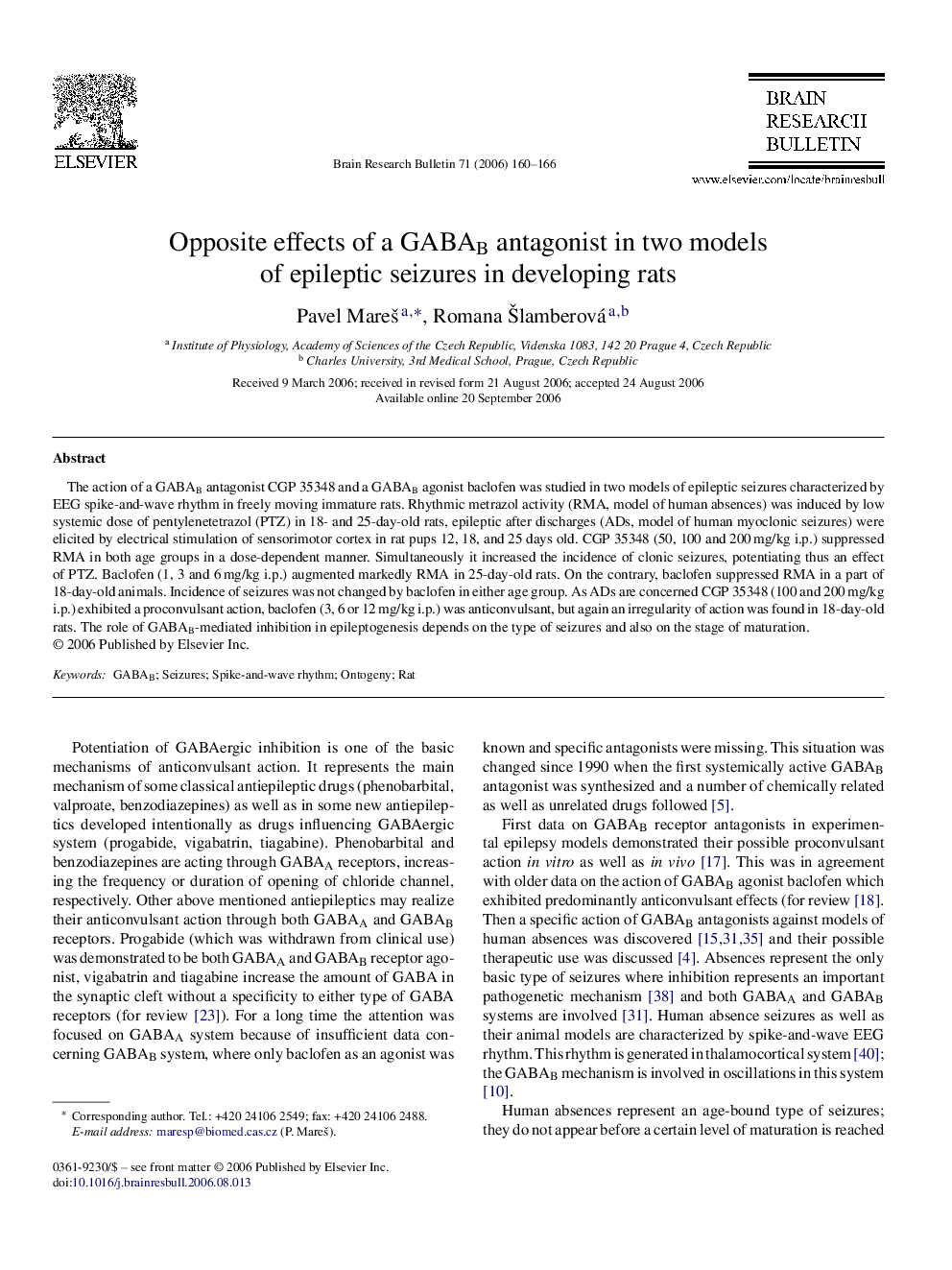| Article ID | Journal | Published Year | Pages | File Type |
|---|---|---|---|---|
| 4320228 | Brain Research Bulletin | 2006 | 7 Pages |
The action of a GABAB antagonist CGP 35348 and a GABAB agonist baclofen was studied in two models of epileptic seizures characterized by EEG spike-and-wave rhythm in freely moving immature rats. Rhythmic metrazol activity (RMA, model of human absences) was induced by low systemic dose of pentylenetetrazol (PTZ) in 18- and 25-day-old rats, epileptic after discharges (ADs, model of human myoclonic seizures) were elicited by electrical stimulation of sensorimotor cortex in rat pups 12, 18, and 25 days old. CGP 35348 (50, 100 and 200 mg/kg i.p.) suppressed RMA in both age groups in a dose-dependent manner. Simultaneously it increased the incidence of clonic seizures, potentiating thus an effect of PTZ. Baclofen (1, 3 and 6 mg/kg i.p.) augmented markedly RMA in 25-day-old rats. On the contrary, baclofen suppressed RMA in a part of 18-day-old animals. Incidence of seizures was not changed by baclofen in either age group. As ADs are concerned CGP 35348 (100 and 200 mg/kg i.p.) exhibited a proconvulsant action, baclofen (3, 6 or 12 mg/kg i.p.) was anticonvulsant, but again an irregularity of action was found in 18-day-old rats. The role of GABAB-mediated inhibition in epileptogenesis depends on the type of seizures and also on the stage of maturation.
